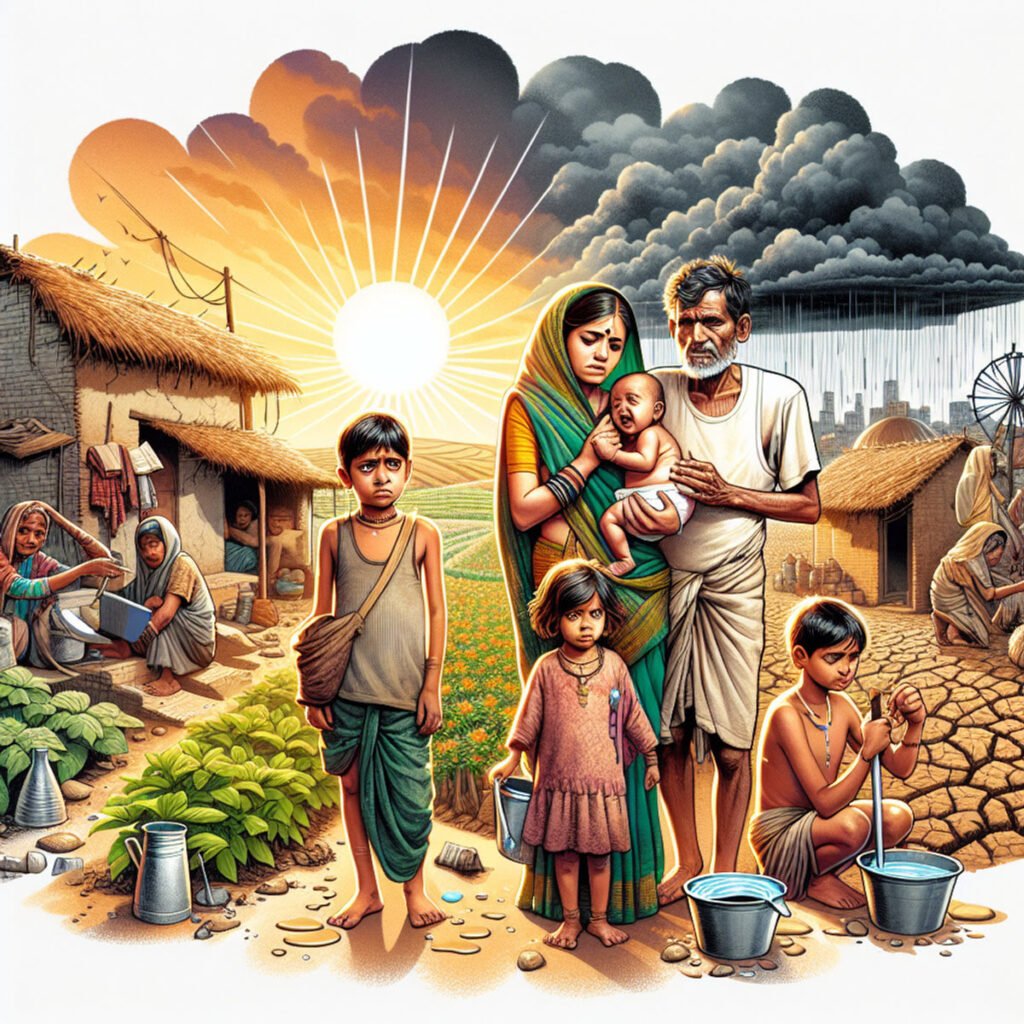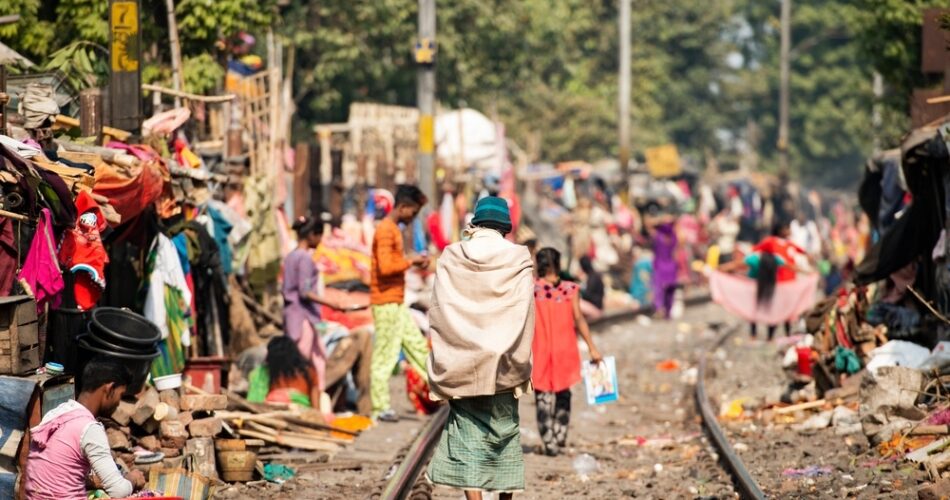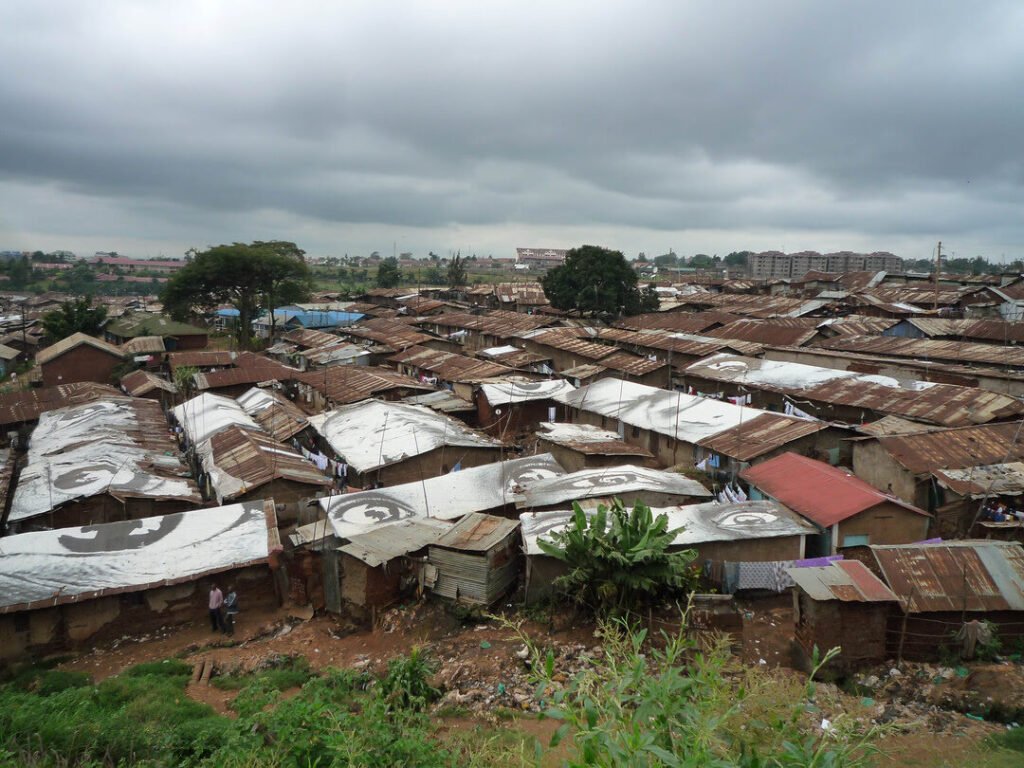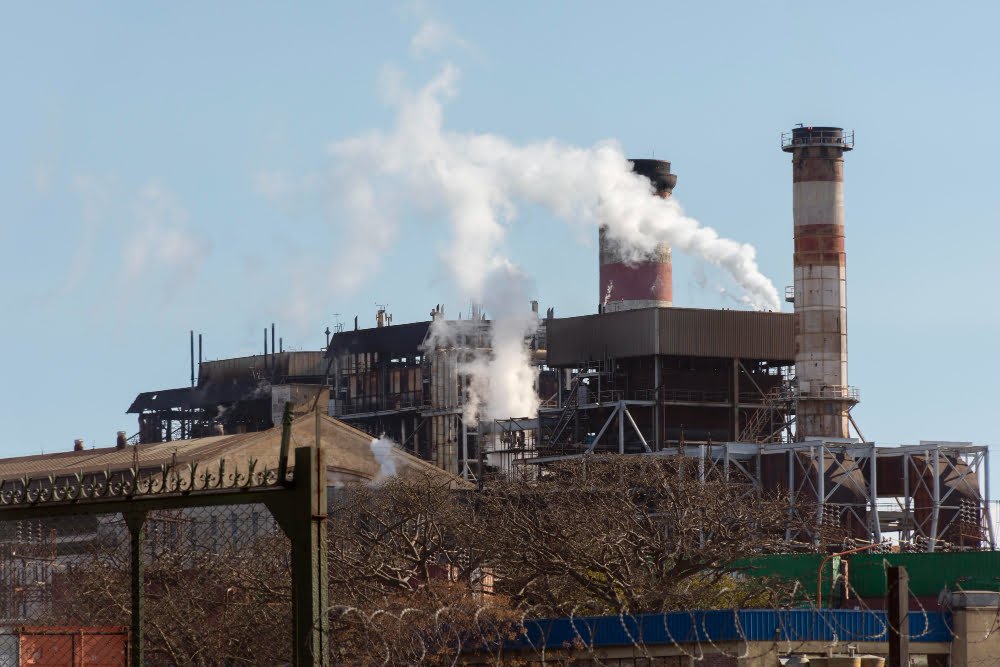Problem of Poverty in India
Meaning of Poverty
The problem of Poverty in India is characterized by the incapacity to meet the essential consumption requirements necessary for sustaining life, health, and efficiency. These fundamental needs encompass access to food, clothing, and shelter, as well as essential elements related to education and health. The failure to fulfill these basic human needs not only inflicts suffering on individuals but also leads to a decline in health and overall efficiency. Consequently, this impedes the prospects of enhancing productivity and breaking free from the shackles of poverty in the future.
Read More: Poverty in India
What is the Poverty Line?
Purchasing power can be defined as the average per capita minimum monthly expenditure, indicating the standard of living for an individual. If we understand that there is a certain minimum expenditure required for a person to sustain their life — let’s call this the poverty threshold — then those living just below this level can be deemed as economically challenged. Individuals falling below the Per Capita and Poverty Line (BPL) lack the financial means to meet this minimum threshold, designating them as economically disadvantaged. On the contrary, those with equal or higher purchasing power are categorized as above the poverty line (APL), signifying that they are not destitute.
1. Determination of the poverty line in India
The poverty line in India was first defined in 1962 by economists like Prof. Gadgil, Dr. N. Ganguly, and Dr. Lokanathan. They determined it based on the monthly expenditure necessary for meeting minimum daily food requirements, clothing, health, education, and entertainment. In 1960-61, it was set at ₹20 per capita per month in rural areas and ₹25 in urban areas.
Today, the poverty line is established by the NSSO, considering consumption expenditures. In 2011-12, it was raised to ₹816 per capita per month in rural areas and ₹1,000 in urban areas. Using the international poverty line of US$1.90 per person per day, 22.5% of India’s population was below the poverty line in 2011. According to the World Development Report 2020, using different thresholds like US$3.20 and US$5.50, 61.7% and 87.4% of India’s population, respectively, were below the poverty line.
2. Basic Needs Approach to Defining Poverty
The traditional definition of poverty falls short of capturing the true essence. The government’s poverty line is often synonymous with ‘starvation.’ Those below this line struggle to afford the essential quantity of food grains needed for survival. A new definition based on basic needs looks at the expenditure required for a person to meet fundamental needs and lead a dignified life.
Read More: Problem of Unemployment in India

Main Causes of Poverty in India
Main Causes of Poverty in India
The issue of poverty in India and its underlying causes have been extensively examined. In 1870, renowned economist Dadabhai Naoroji initiated discussions on India’s poverty, paving the way for subsequent analysis. The key factors contributing to poverty are outlined below:
Main Causes of Poverty in India
- Heavy Population Pressure
- India’s rapidly growing population, reaching 121 crores in 2011, poses a significant obstacle to development.
- Overpopulation leads to lower per capita income, limited land availability, and reduced access to social services and food grains.
- Overpopulation remains the primary driver of poverty in India.
- Rising Prices
- The persistent upward trend in prices, with a growth rate of 6.2 percent in 2020-21, adversely affects the country’s poor.
- Escalating prices contributes to the deepening impact of poverty.
- Low National Income and Slow Economic Growth
- India’s total national income is notably low, resulting in a low per capita income.
- The growth rate of Net Domestic Product (NDP) during the five-year plans has been insufficient to counter the population growth rate, perpetuating poverty.
- Chronic Unemployment and Underemployment
- The continuous rise in population has led to chronic underemployment, particularly in agriculture.
- Unemployment, a significant cause of poverty, persists, with 4.21 crore educated unemployed individuals registered in December 2019.
- Rural Economy Challenges
- India’s predominantly rural economy faces challenges, marked by backward agriculture, low income, and hidden unemployment.
- While 46.2 percent of the population relies on agriculture, its contribution to the national income is only 16.3 percent, exacerbating poverty.
- Capital Deficiency
- Insufficient savings and low capital formation contribute to the economic backwardness of India.
- Limited capital hampers investment and perpetuates low-income levels.
- Lack of Efficient Entrepreneurs
- The scarcity of innovative, risk-taking entrepreneurs hinders industrial development.
- Industries, particularly those involving high risk, struggle to flourish, limiting overall income growth.
- Incomplete Industrialization
- India lags industrially, particularly in capital goods industries, relying heavily on foreign countries.
- Consumer goods industries have developed, but comprehensive industrialization is yet to be achieved.
- Outdated Social Institutions
- Age-old social institutions like the caste system and stringent family structures impede economic progress.
- Spending on religious rituals and unproductive activities further exacerbates the financial situation of the poor.
- Under-utilization of Natural Resources
- Despite abundant natural resources, India faces under-utilization due to inadequate planning and management.
- Main Causes of Poverty in India
- Income Inequality
- Efforts to address income inequality remain insufficient, contributing to the persistence of poverty.
Main Causes of Poverty in India
Read More: Main Features of Indian Economy
FAQ on the Problem of Poverty in India
What is Poverty?
Poverty is characterized by the incapacity to meet the essential consumption requirements necessary for sustaining life, health, and efficiency. These fundamental needs encompass access to food, clothing, and shelter, as well as essential elements related to education and health.
What is the Poverty Line?
Purchasing power is the average minimum monthly expenditure per capita, reflecting an individual's standard of living. Those living slightly below this level can be considered poor, falling into the Below Poverty Line (BPL) category. Individuals with equal or higher purchasing power are classified as Above the Poverty Line (APL), indicating they are not destitute.
What are the determinants of a poverty line in India?
The poverty line is determined based on the monthly expenditure necessary for meeting minimum daily food requirements, clothing, health, education, and entertainment.
What is the basic needs approach to poverty?
The government's poverty line is often synonymous with 'starvation.' Those below this line struggle to afford the essential quantity of food grains needed for survival. A new definition based on basic needs looks at the expenditure required for a person to meet fundamental needs and lead a dignified life.
What are the main causes of poverty in India?
The issue of poverty in India and its underlying causes have been extensively examined. In 1870, renowned economist Dadabhai Naoroji initiated discussions on India's poverty, paving the way for subsequent analysis.
- Heavy Population Pressure
- Rising Prices
- Low National Income and Slow Economic Growth
- Chronic Unemployment and Underemployment
- Rural Economy Challenges
- Capital Deficiency
- Lack of Efficient Entrepreneurs



